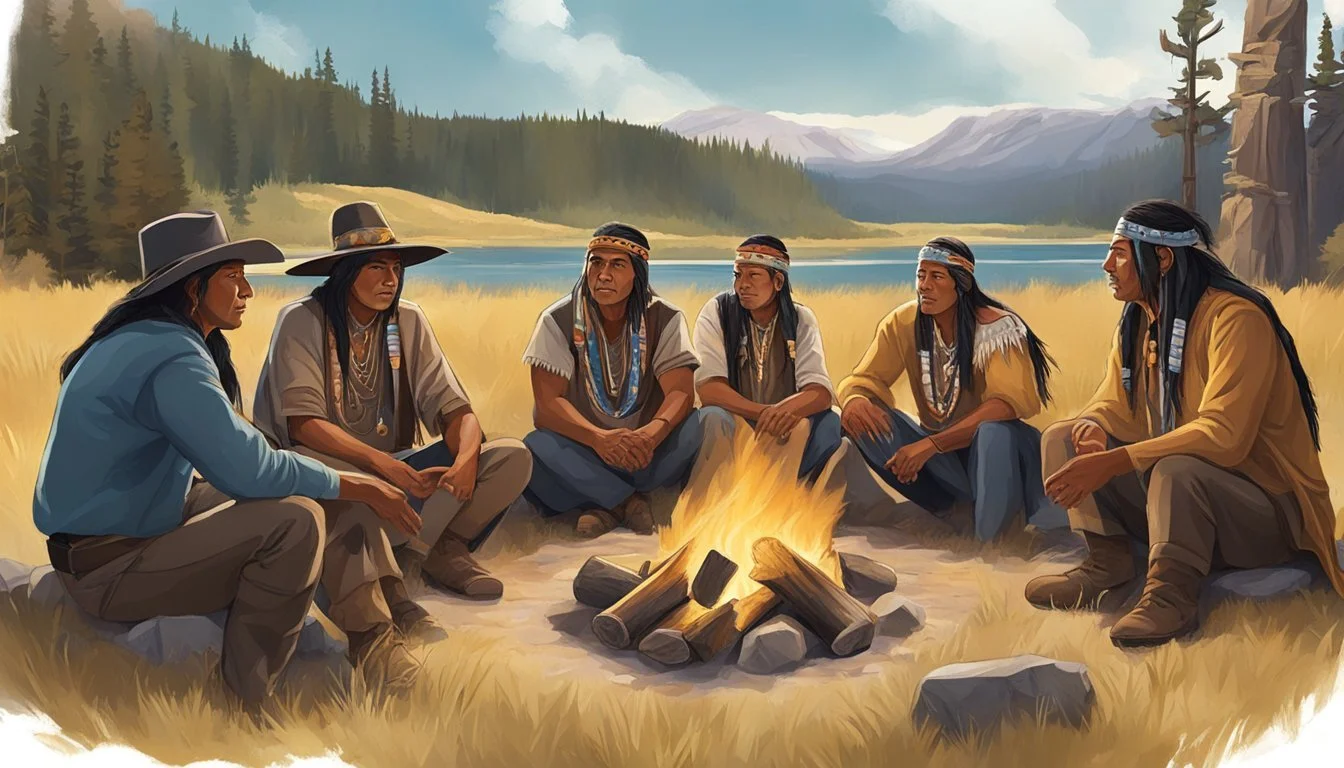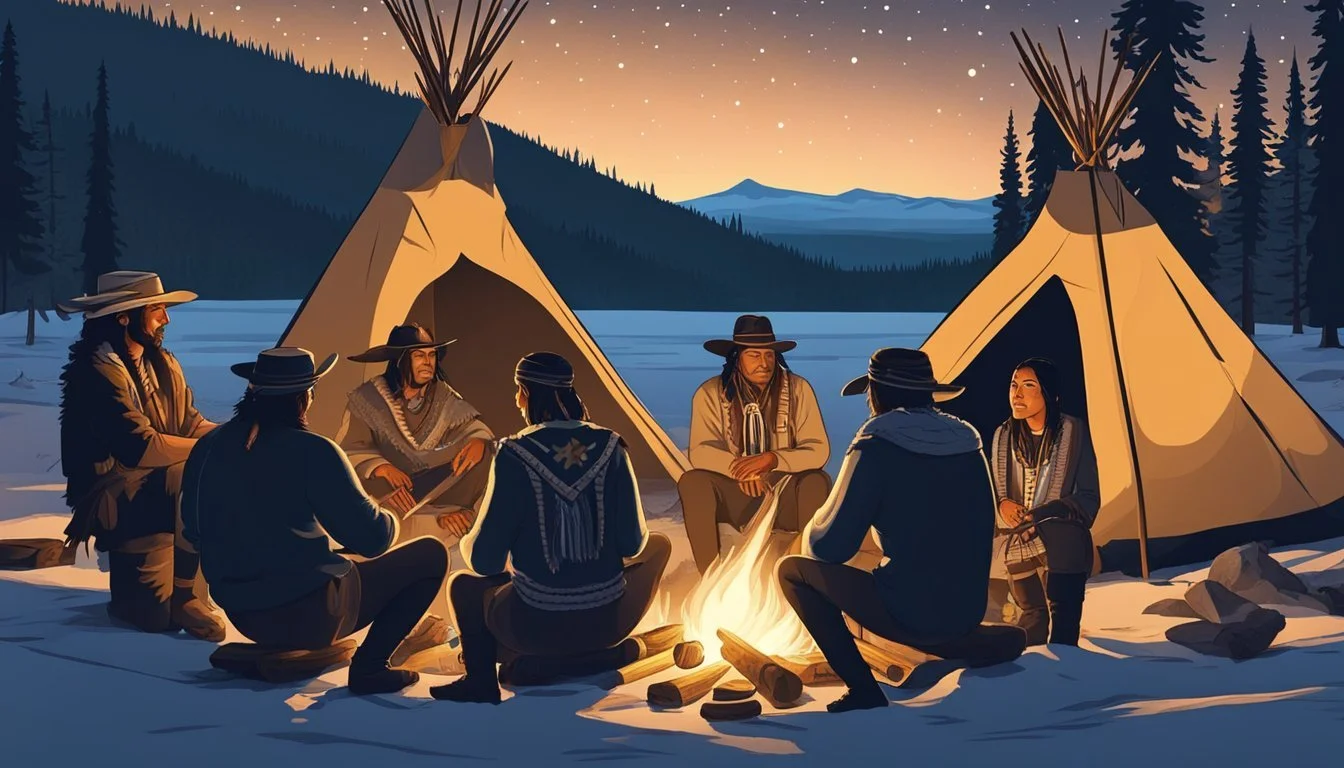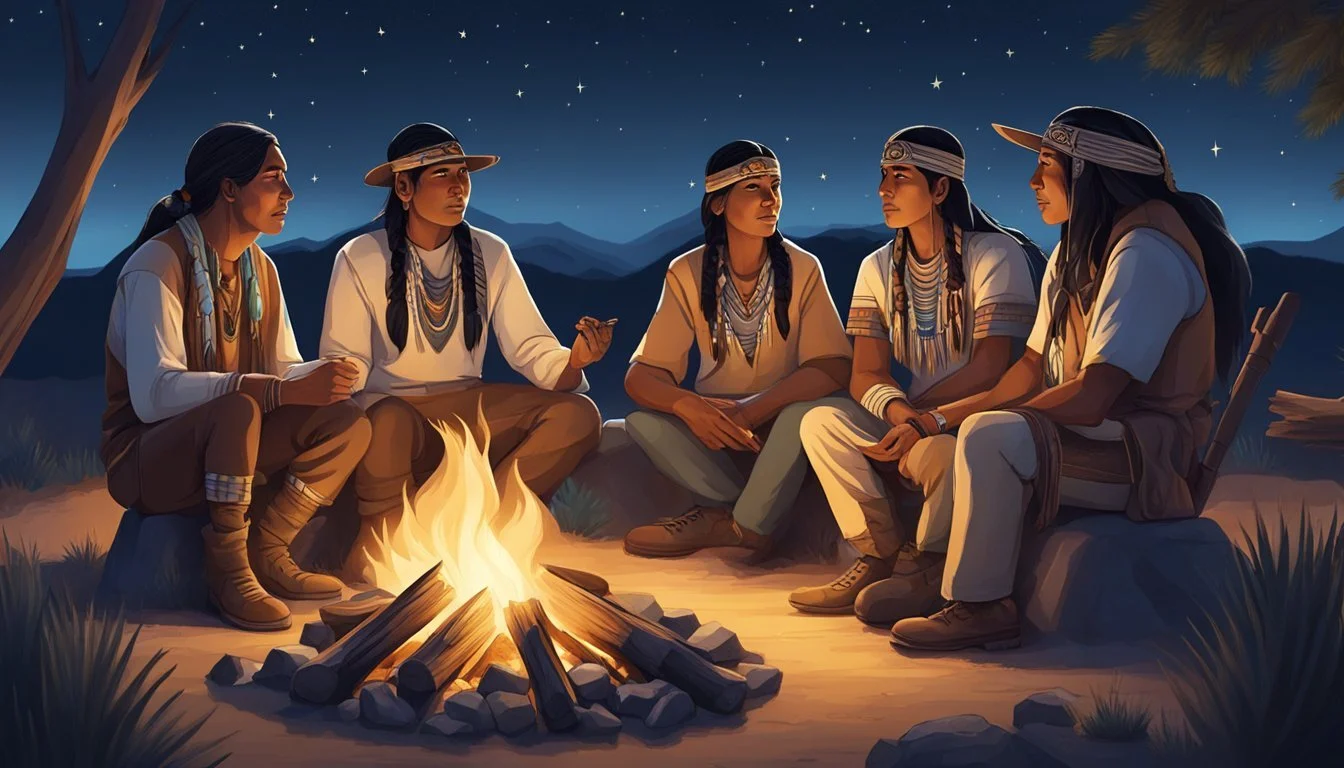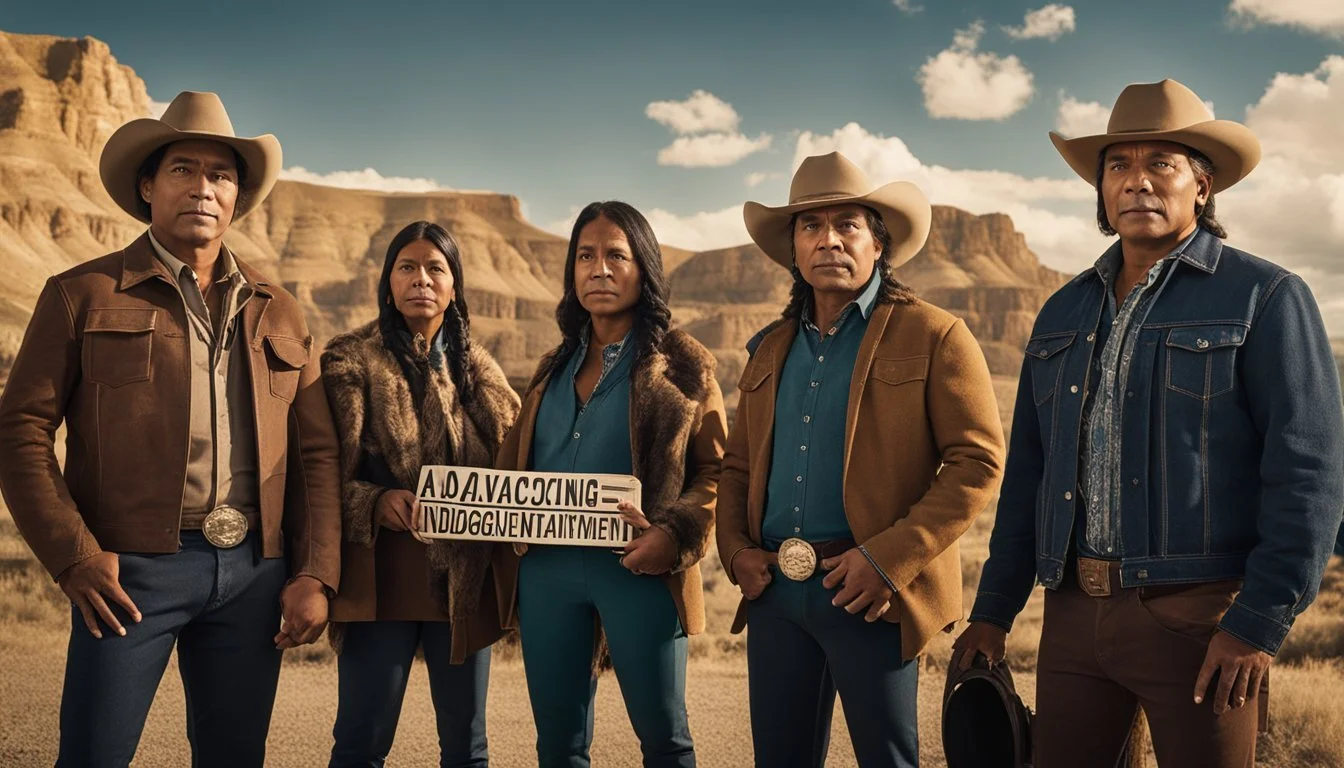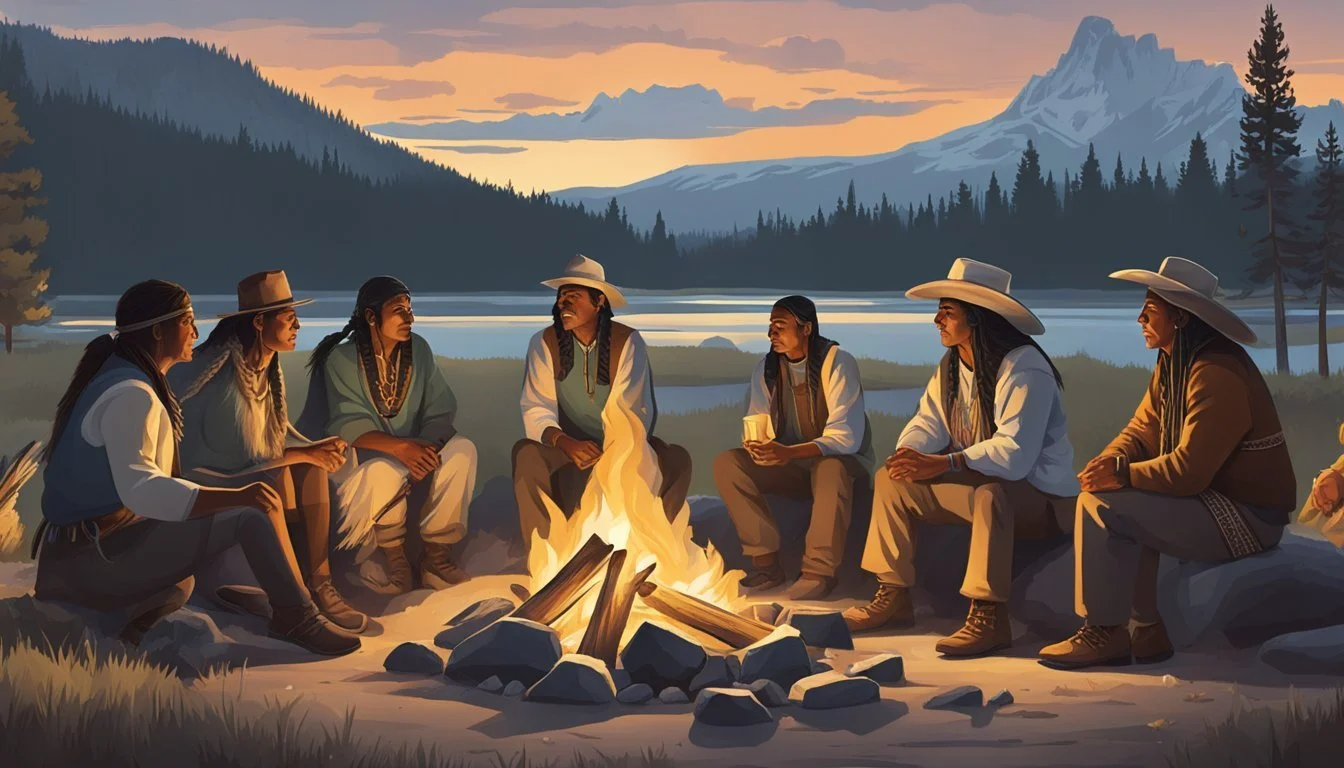Yellowstone's Untold Stories: Unleashing the Power of Native American Voices
Yellowstone, the popular television series, has made efforts to include Native American characters and storylines. The show features Indigenous actors in prominent roles and consults with Native American advisors to enhance authenticity. A greater focus on Native American characters could provide deeper insights into Indigenous cultures and contemporary issues facing tribal communities.
Expanding the roles of characters from the fictional Broken Rock Indian Reservation could offer a more nuanced portrayal of Native American life. This shift might explore themes of tribal sovereignty, land rights, and cultural preservation within the context of modern America. By giving more screen time to Indigenous perspectives, Yellowstone could contribute to a broader understanding of Native American experiences in the entertainment industry.
Such a focus could also highlight the complexities of Native American identity and the challenges faced by Indigenous peoples today. It might showcase traditional practices alongside contemporary realities, offering viewers a more comprehensive view of Native American life beyond stereotypes. This approach could potentially set a new standard for Indigenous representation in mainstream television.
The Importance of Authentic Representation in Media
Authentic portrayal of Native American characters in television and film plays a crucial role in shaping public perceptions and understanding. When media creators like Taylor Sheridan prioritize cultural authenticity, it can lead to more nuanced and respectful depictions.
Accurate representation helps combat harmful stereotypes that have long plagued Indigenous portrayals in entertainment. By showcasing diverse Native American experiences and perspectives, media can foster greater cultural awareness among viewers.
Authentic representation also affirms and celebrates cultural identity for Native American audiences. Seeing one's culture portrayed with care and accuracy on screen can be empowering and validating.
Collaborating with tribal advisors and casting Native actors in Indigenous roles are key steps toward achieving authenticity. These practices ensure that cultural elements, language, and traditions are depicted accurately and respectfully.
Media has the power to influence societal attitudes. When Native American characters are given depth and agency, it can challenge misconceptions and promote greater understanding between cultures.
Authentic representation extends beyond just including Native characters. It involves giving them meaningful storylines, exploring their communities, and presenting their viewpoints with dignity and complexity.
Overview of Native American Characters in Yellowstone
Yellowstone features several prominent Native American characters who play integral roles in the series' complex narrative. These characters represent diverse Indigenous perspectives and experiences within the show's fictional Montana setting.
Thomas Rainwater
Thomas Rainwater, portrayed by Gil Birmingham, serves as the chairman of the Broken Rock Reservation. A shrewd businessman and political leader, Rainwater often clashes with the Dutton family over land rights and resources. His character embodies the tension between preserving Native heritage and pursuing economic development for his people.
Rainwater's storylines explore the challenges of tribal leadership and the delicate balance between tradition and progress. His efforts to reclaim ancestral lands and build a casino highlight the complex relationship between Native communities and surrounding non-Native populations.
Monica Dutton
Kelsey Asbille plays Monica Dutton, a Native American woman married to Kayce Dutton. Her character bridges the gap between the Dutton ranch and the Broken Rock Reservation. Monica works as a teacher and often advocates for Native youth.
Monica's storylines delve into the difficulties of maintaining cultural identity while navigating life in two worlds. Her relationship with Kayce explores themes of interracial marriage and the blending of Native and non-Native families.
Angela Blue Thunder
Q'orianka Kilcher portrays Angela Blue Thunder, a formidable Native American woman hired by Thomas Rainwater. Angela is known for her fierce determination and ruthless tactics in pursuing the interests of the Broken Rock Reservation.
Her character brings a new level of intensity to the Native American storylines. Angela's methods often push ethical boundaries, raising questions about the lengths one might go to protect their community's interests.
Tate Dutton
Tate Dutton, son of Kayce and Monica, represents the next generation of both the Dutton family and the Native American community. His character, though young, embodies the intersection of two worlds.
Tate's storylines often explore his developing identity as both a Dutton and a member of the Broken Rock tribe. His experiences highlight the complexities of growing up with mixed heritage in a region fraught with historical and ongoing tensions between Native and non-Native populations.
Challenges and Strengths in Depicting Indigenous Cultures
Portraying Native American characters and cultures in television presents unique opportunities and difficulties. Careful attention to authenticity and respectful representation can lead to more nuanced depictions of Indigenous experiences.
Breaking Free of Hollywood Stereotypes
Yellowstone faces the challenge of avoiding harmful stereotypes that have long plagued Native American representation in media. The show aims to present complex Indigenous characters with depth and agency. This approach helps counter one-dimensional portrayals often seen in Hollywood productions.
Casting choices play a crucial role in authentic representation. Yellowstone employs Native American actors for Indigenous roles, adding credibility to the performances. This practice supports greater diversity in the entertainment industry and provides opportunities for Indigenous talent.
The series explores contemporary issues affecting Native communities, moving beyond outdated narratives. By focusing on modern challenges like land rights and economic development, Yellowstone offers a more relevant portrayal of Indigenous life.
Ensuring Cultural and Historical Accuracy
Maintaining cultural authenticity presents both challenges and opportunities for Yellowstone. The show consults with Native American advisors to ensure accurate depictions of traditions, languages, and customs. This collaboration strengthens the portrayal of Indigenous cultures and helps preserve cultural heritage.
Balancing entertainment with historical accuracy requires careful consideration. Yellowstone addresses past injustices while avoiding oversimplification of complex issues. This approach educates viewers about Indigenous history and its ongoing impacts.
The series incorporates Indigenous narratives and perspectives, giving voice to often-overlooked stories. By featuring Native American characters in prominent roles, Yellowstone contributes to more diverse storytelling in mainstream media.
Impact of Yellowstone on Indigenous Issues Awareness
Yellowstone has significantly raised awareness of Native American issues among a broad audience. The show's portrayal of Indigenous characters and storylines has prompted viewers to consider the complex history and present-day realities faced by Native communities.
The series sheds light on important topics such as land rights, sovereignty, and economic development. By featuring the fictional Broken Rock Indian Reservation, Yellowstone explores the challenges of maintaining tribal sovereignty in the modern era.
Viewers gain insight into contemporary issues affecting Native Americans, including:
Resource management conflicts
Cultural preservation efforts
Economic opportunities and obstacles
Yellowstone's success demonstrates that audiences are receptive to narratives incorporating Native perspectives. This popularity may inspire other productions to feature more Indigenous characters and storylines, potentially leading to increased diversity in the entertainment industry.
The show's impact extends beyond entertainment. It has sparked public interest in Native American issues and highlighted the need for authentic Indigenous representation both on and off screen.
Native American actors from Yellowstone have leveraged their visibility to advocate for accurate portrayals across media. This increased representation could contribute to a more nuanced understanding of Indigenous cultures and challenges among the general public.
Developing the Narrative: Potential Storylines and Themes
Shifting focus to Native American characters in Yellowstone opens up rich storytelling possibilities. These narratives could explore complex issues facing Indigenous communities while offering authentic representation.
Exploring Tribal Politics and Sovereignty
The Broken Rock Reservation could become a central element in Yellowstone's narrative. The show might delve into the intricacies of tribal governance, showcasing the challenges faced by tribal leaders in balancing traditional values with modern realities.
Land disputes between the reservation and the Dutton family could take center stage. This conflict would highlight the ongoing struggle for Indigenous land rights and sovereignty in the face of encroaching development.
Storylines could explore the complexities of federal-tribal relationships, including negotiations over resource management and law enforcement jurisdiction.
Confronting Historical and Generational Trauma
Yellowstone could address the lasting impacts of historical injustices on Native American communities. Characters might grapple with intergenerational trauma stemming from forced relocation, boarding schools, and cultural suppression.
The show could portray efforts to revitalize traditional practices and languages, emphasizing the resilience of Indigenous cultures. This focus would shed light on the importance of cultural preservation in healing historical wounds.
Storylines might explore how characters navigate their identities in a world that often misunderstands or misrepresents Native American experiences.
Emphasizing Economic Challenges and Opportunities
Economic hardship on the reservation could be a key theme. The show might depict characters struggling with limited job opportunities, inadequate housing, and lack of access to healthcare.
Yellowstone could showcase innovative economic development initiatives led by tribal members. These could include sustainable tourism projects, renewable energy ventures, or traditional craft enterprises.
Conflicts might arise over proposed resource extraction projects on reservation land, highlighting the tension between economic needs and environmental stewardship.
The series could explore partnerships between the tribe and outside entities, examining both the potential benefits and risks of such collaborations.
Critical Reception and Audience Perception
Yellowstone's portrayal of Native American characters has sparked significant debate among viewers and critics. The Paramount Network series has been praised for its efforts to include Indigenous representation, but has also faced criticism for its handling of complex cultural issues.
Many viewers appreciate the show's attempt to highlight Native American perspectives and experiences. The inclusion of characters from the fictional Broken Rock Indian Reservation has been seen as a step towards more diverse storytelling in mainstream television.
Critics have noted that while Yellowstone strives for authenticity in some aspects, it sometimes falls short in presenting a nuanced portrayal of Native American life. Some argue that the show may oversimplify certain cultural elements or perpetuate stereotypes.
The series has influenced public perception of Native American issues to some extent. Its popularity has encouraged other productions to consider more diverse and authentic Indigenous characters in their storytelling.
Audience reception has been mixed, with some viewers praising the show's representation efforts and others calling for more depth and accuracy. The depiction of cultural tensions between Native Americans and non-Native characters has been a central point of discussion among fans and critics alike.
The Role of Casting and Performance in Representation
Native American actors play a crucial part in bringing authenticity to Indigenous characters on screen. Yellowstone has made efforts to cast Indigenous performers in key roles, recognizing the importance of genuine representation.
Gil Birmingham, a Comanche actor, portrays Thomas Rainwater with depth and nuance. His performance highlights the complexities of Native leadership and cultural preservation in modern times.
Kelsey Asbille's casting as Monica Dutton sparked discussions about Indigenous representation. While her performance is strong, some have questioned the decision not to cast a Native actress in the role.
The show's commitment to casting Native actors extends beyond lead roles. Many supporting characters and extras are played by Indigenous performers, adding layers of authenticity to scenes depicting reservation life.
Casting decisions directly impact how cultural heritage is portrayed on screen. When Native actors embody characters from their own backgrounds, they bring personal insights and experiences that enrich the performances.
Indigenous actors often serve as cultural ambassadors on set. Their presence can help ensure respectful portrayals and accurate depictions of traditions, language, and customs.
The performances of Native actors in Yellowstone contribute to a more nuanced representation of Indigenous peoples on television. Their work challenges stereotypes and offers viewers a glimpse into the diversity of Native American experiences.
Advancing Indigenous Narratives in the Entertainment Industry
Yellowstone's portrayal of Native American characters has opened doors for more authentic Indigenous representation in mainstream media. By expanding the roles and storylines of Native characters, the show could delve deeper into important aspects of Indigenous life and culture.
Increased focus on Native American characters would allow for more nuanced exploration of identity and cultural preservation. This could showcase the challenges and triumphs of maintaining traditional practices in a modern world.
Storytelling plays a crucial role in Indigenous cultures. Giving Native characters more screen time would provide opportunities to share traditional stories and teachings, enriching the narrative and educating viewers.
Land ownership is a complex and contentious issue for many Indigenous communities. Yellowstone could examine this topic more thoroughly, highlighting the historical and contemporary struggles related to tribal lands and sovereignty.
By consulting closely with tribal advisors and hiring more Indigenous writers and actors, the show could ensure greater authenticity in its portrayal of Native American life. This approach would contribute to a more accurate and respectful representation of Indigenous peoples in entertainment.
Expanding Native American storylines in Yellowstone would pave the way for more Indigenous-led productions in the future. This shift could lead to a broader range of Native American stories being told across various genres and platforms.
Conclusion: Envisioning a Better Representation
Yellowstone has the potential to significantly enhance its portrayal of Native American characters and storylines. By dedicating more screen time to Indigenous perspectives, the show could offer a richer, more nuanced depiction of contemporary Native American life.
Increased collaboration with Native American writers, actors, and consultants would bring authenticity to the characters and cultural elements depicted. This approach would ensure respectful and accurate representation of Indigenous traditions and challenges.
The series could explore complex issues like tribal sovereignty, land rights, and cultural preservation in greater depth. By doing so, Yellowstone would educate viewers about the ongoing struggles and triumphs of Native American communities.
Developing multidimensional Indigenous characters with their own story arcs would move beyond stereotypes and tokenism. This would allow for a more comprehensive exploration of Native American identities and experiences.
Highlighting the diversity among Indigenous nations and cultures would provide a broader understanding of Native American life. Yellowstone could showcase the unique traditions, languages, and governance structures of different tribes.
By amplifying Native American voices and stories, Yellowstone has the opportunity to contribute to a more inclusive and representative television landscape. This shift would not only enrich the show's narrative but also promote cultural understanding and respect among viewers.

